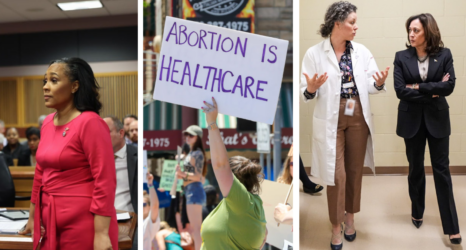The Jian Ghomeshi trial and verdict in Canada have enraged and/or saddened an entire continent of women. Because every woman has a story from when she was a girl, or a teen, or from last week, with the same basic plot: he was believed, she wasn’t. This is mine.
It so happens that my fate as an outcast was sealed early, by my grade two teacher, who made me mark my classmates’ worksheets after I finished my own. I would have been miserable had it not been for a few awkward girls who agreed to be my friends. They were the girls picked last for the teams in gym class—as likely to take a ball in the glasses as catch it—like me. I had fun with them. I bet they all went on to great things.
Once I hit adolescence, my mum bought me whatever the other kids were wearing: Earth shoes, paisley bandanas, maxi skirts. I tried really hard to camouflage my brains. By the end of grade seven, I seemed to have gained a toe-hold on popularity, but my success hinged on the good graces of Judy Atkin. Since kindergarten, I had sat in the desk behind hers, because my name came next in the alphabet. Judy was every bit as successful as me in school, but she had a swagger and a way of rolling up her shirt sleeves that defied anyone to mess with her.
One glorious day at the end of grade seven, I was invited to a party with the cool kids, thanks, no doubt, to Judy’s intervention on my behalf. I remember it was on the street where disgraced former Toronto Mayor Rob Ford lived. I contributed my portable turntable, which played both 45s and 33s; my mother had won it in a contest, and it was the best gadget in our house. This party had everything: Pillsbury crescent roll hot dogs, Pop Shoppe soft drinks, slow dancing, and Seven Minutes in Heaven in the rec room closet with whichever sweaty boy the spinning bottle pointed to.
Necking being a hugely popular pastime for 12 and 13 year olds (this was before the advent of video games), these soirées continued every weekend, in panelled rec rooms with green or orange shag carpet. And I continued to be invited. We played a dancing game where a “caller” yelled out “rum” to kiss your partner, and “coke” to switch partners. Someone had learned it from their swinging parents; key parties were pretty big at the time. One night, a boy named Peter had a go at squeezing my little apricot boobs during a Gino Vannelli song. I moved his hand around to the small of my back. He made a second attempt to cop a feel, which I also thwarted. After the song was over, I was so gobsmacked that I needed to talk to someone. I was upset and proud at the same time. I made the fateful mistake of telling a member of the in-crowd named Laura. Laura told one of the boys, who told the others, who rallied around their bro, accusing me of making it all up. And thus ended my season in the sun, as suddenly as it had begun.
My fall from grace was quite breathtaking. It was decreed by the leader of the pack, a precociously busty girl named Karen, that no girls were to talk to me. But my best friend Lisa did anyway. She hadn’t been at the party, or I would have told her about the groping and she would have believed me. We played the cello next to each other in strings, skied together on the weekend, and hung out while one or the other of us was babysitting at night, tasting all the kinds of booze in the families’ wet bars. Until the end of that school year and right through the next one, I was the object of cruel pranks, and some schoolyard violence that fell within the range of normal for the times. There was a steep hill next to the playground that got very icy in winter, and it was the habit of the kids with power to hurl the kids they wished to humiliate down it. I would start the school day damp, freezing and bruised, but adults didn’t get involved in these types of shenanigans, and no kid would think of snitching to a teacher.
My untouchable status followed me to high school—which I also found very boring—so I stopped going very often. I found I could ace my exams with a minimum of independent study, and preferred to spend my days at the museum or the art gallery. In grade 11, I switched to an alternative high school where the history classroom had floor cushions instead of chairs, the walls were covered with graffiti and everyone smoked in class. A classmate who later became a TV star told People magazine he had attended a school for social pariahs, which was not inaccurate.
But that hippie school also had women’s studies three full decades before some determined feminist undergrads lobbied to have it added to Ontario’s secondary school curriculum, and happily for me, a couple of confidence-inspiring women teachers introduced me to some awe-inspiring feminist writers. I discovered the meaning of misogyny, but I also began to learn how to fight it.
Now I’m one of those crones who can’t believe I still have to protest this shit.
Get the Ms. Blog in your inbox! Click here to sign up for our newsletter.
Photo via Imgur




